
7. Virginia Tech Hokies
Best case: With the core of Kitley, Georgia Amoore and Cayla King back, the chemistry so pivotal to last season's success doesn't change. Transfers Rose Micheaux and Matilda Ekh fit in immediately and produce the way Taylor Soule and Kayana Traylor did a year ago. This time the Hokies sweep the ACC regular-season and tournament titles. Once again Kenny Brooks has his team playing its best basketball at the end of the season and Kitley, who joins Alana Beard and Alyssa Thomas as the only three-time ACC players of the year, finishes her career in another Final Four.
Worst case: Brooks can't quite get enough from his new players. Kitley and Amoore are forced to carry the Hokies, and as February turns to March they start to show signs of fatigue. Road losses to Louisville and Notre Dame late in the season cost the Hokies the ACC championship. The NCAA tournament magic isn't there, either, and Virginia Tech is the victim of a Sweet 16 upset.
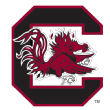
8. South Carolina Gamecocks
Best case: Having five new starters and a fresh beginning actually makes it easier to get over the disappointment of the loss to Iowa in the national semifinals. This edition of the Gamecocks, led by Kamilla Cardoso, who emerges as the most physically dominant force in the game, comes together quickly with wins over Notre Dame and Maryland to begin the season. After sharing the SEC title with LSU, South Carolina makes a run to its fourth consecutive Final Four.
Worst case: The young talent doesn't develop fast enough, Te-Hina Paopao doesn't solve the outside shooting shortcomings and opponents clog the middle on Cardoso. Without a proven go-to scorer, the Gamecocks fall short in nearly all their pivotal games, and they can't get past the Sweet 16.

9. Tennessee Lady Vols
Best case: Rickea Jackson, not Reese or Cardoso, is the best player in the SEC. In fact, Jackson performs like a first-team All-American all season and propels the Lady Vols to a surprise SEC championship. Nonconference wins over Indiana, Ohio State and Notre Dame help Tennessee earn a No. 1 seed in the NCAA tournament, and the Lady Vols cash in. The veteran guard tandem of Jewel Spear and Destinee Wells proves clutch in March and Tennessee ends the 15-year Final Four drought, getting to Cleveland, the site of the program's last national championship in 2007.
Worst case: The turnover problem that showed improvement last year reverts to 2022 levels when the Lady Vols ranked 339th in total turnovers. It's too much to overcome despite dominant rebounding and Jackson's play. Tennessee can't compete with LSU and South Carolina, and even slips behind Ole Miss in the SEC. The season ends with a second-round NCAA tournament upset.
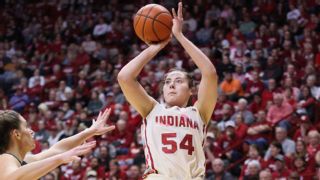

10. Indiana Hoosiers
Best case: Teri Moren has proven she knows how to make all the pieces fit, especially when she has experienced players, and everyone and everything fits perfectly this year. With Mackenzie Holmes outplaying Cameron Brink in a November meeting with Stanford, the Hoosiers once again enter the Final Four conversation. Iowa arrives in Bloomington on Feb. 22 with the Big Ten title on the line, and Indiana's collection of guards -- Sara Scalia, Sydney Parrish, Chloe Moore-McNeil and Yarden Garzon -- outmaneuver the Hawkeyes' Clark as the Hoosiers win the conference for the second year in a row. This time, there is no second-round NCAA tournament upset. Indiana reaches its first Final Four.
Worst case: Holmes remains great, but Indiana doesn't play nearly as well without Grace Berger as it did last year when she was out for a stretch with an injury. Her absence looms large over the program, and the Hoosiers slip to third in the Big Ten behind Iowa and Ohio State. There is no breakthrough in the NCAA tournament, either.
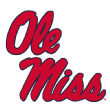
11. Ole Miss Rebels
Best case: The ascension continues in Oxford. In 2022, the Rebels made the NCAA tournament for the first time in 15 years but lost in the first round. Last year, they won two tournament games and reached the Sweet 16. This time, Ole Miss is Elite Eight-bound. Kennedy Todd-Williams and KK Deans prove to be one of the best transfer tandems in the country. The biggest difference is that the Rebels are a much better outside shooting team than they were a year ago -- good enough to challenge South Carolina and Tennessee for second place in the SEC.
Worst case: Deans doesn't make the difference coach Yolett McCuin-McPhee was counting on and Ole Miss remains one of the worst 3-point shooting teams in the SEC. The defense remains a staple, but it isn't enough to overcome the lack of offense in the Rebels' biggest games. They reach the SEC tournament semifinals again, but this time bow out in the second round of the NCAA tournament.

12. Notre Dame Fighting Irish
Best case: Olivia Miles' leg is 100% by midseason, just in time for ACC play, and she and freshman point guard Hannah Hidalgo pair well together to form a dominating Irish up-tempo style. Unlike 2022-23, Notre Dame is at its best at the end of the season. The Irish repeat as ACC regular-season champs, with Sonia Citron a serious contender for conference player of the year. A No. 2 NCAA tournament seed propels the Irish back to the Final Four for the first time since 2019.
Worst case: Hidalgo starts strong but the grind of ACC play is a challenge. Miles isn't ever fully recovered and can't perform to her usual level. Notre Dame hangs in the conference race, but difficulties defending the inside haunt the Irish all season and they fall short. A similar fate awaits in the NCAA tournament, where Notre Dame is upset in the second round.
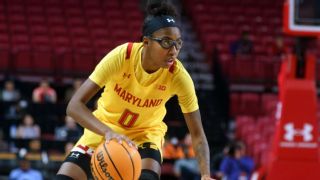

13. Maryland Terrapins
Best case: With four graduate students in the rotation and a potential star in Shyanne Sellers to build around, the Terps don't suffer a bit after losing two WNBA first-round draft picks in Diamond Miller and Abby Meyers. Sellers establishes herself as one of the country's best and most versatile players. Games late in the season against Ohio State and Indiana are pivotal to the Big Ten race, and Maryland surprises many by finishing second and then getting to the Sweet 16.
Worst case: As good as Sellers becomes, it's apparent how many holes Miller plugged for the Terps. Without her, Maryland's problems on defense and rebounding are more exposed. The Terrapins ranked 275th in points allowed per game and 285th in defensive rebounding rate. Those issues only worsen without any significant size added to the roster and the absence of Miller's perimeter length. That means a fifth-place Big Ten finish and a second-round NCAA tournament exit.

14. Baylor Bears
Best case: Baylor upsets Utah a week into the season at the Ferrell Center and the confidence grows. The Bears ride it into Big 12, where they outduel Texas for the title. Darianna Littlepage-Buggs goes from the best freshman to one of the best players in the conference. Aijha Blackwell is comfortable and healthy in Waco and becomes the most important piece to Baylor's improvement. As one of the biggest surprises of the NCAA tournament, Baylor reaches the Elite Eight.
Worst case: While Baylor's depth looks good at the start of the season, the pieces don't all fit and Littlepage-Buggs and Sarah Andrews are forced to carry most of the load. It becomes too much by year's end and the Bears are upset in the Big 12 quarterfinals and then also lose their first NCAA tournament game.
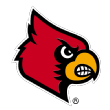
15. Louisville Cardinals
Best case: Stirring the chemistry pot to near perfection once again, Jeff Walz takes his collection of transfers and turns out a top-three ACC finish. Jayda Curry is every bit the scorer and leader Van Lith was for the Cardinals, and Kiki Jefferson proves to be as productive in the ACC as she was in the Sun Belt and CAA. Post player Olivia Cochran, the only remaining starter, goes from the fourth option she has been most of her career to a force, averaging a double-double. Louisville reaches the Elite Eight for the sixth year in a row.
Worst case: It is too much to ask for Louisville to turn the roster over yet again and find major success. A deep ACC means more conference losses for Louisville in over a decade and the worst NCAA tournament seed since the Cardinals were a No. 7 in 2012. The Elite Eight streak ends.

16. Stanford Cardinal
Best case: The talent level isn't what recent Stanford teams have had, but the one part that gets overlooked is just how good Brink is. The 6-foot-4 senior puts the Cardinal on her back and leads them to the Pac-12 championship, a fitting end for the conference that Stanford was so instrumental in building. Brink exceeds all the other stars in the game, including Clark, to capture national player of the year honors. She takes the Cardinal all the way to the Final Four for the third time in four years.
Worst case: That slight drop in talent that was so impacted by graduations and the transfer portal is too much for Brink overcome, and UCLA and Utah overtake Stanford atop the Pac-12. On some nights, Talana Lepolo, Kiki Iriafen and promising freshman Courtney Ogden shine, but the consistency isn't there. Brink is asked to do too much against swarming defenses and it's another second-round NCAA tournament disappointment.
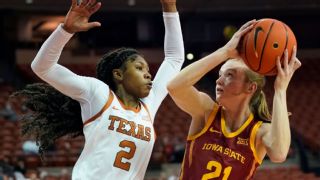

17. North Carolina Tar Heels
Best case: Courtney Banghart has put together one of the best defenses in the country. With transfers Lexi Donarski and Maria Gakdeng, plus holdovers Teonni Key and Alyssa Utsby, the Tar Heels shut down even the best offenses in the ACC, such as Virginia Tech and Notre Dame. With Deja Kelly and Paulina Paris, one of the most improved sophomores in the country, leading the offense, North Carolina wins the ACC outright and reaches the Elite Eight for the first time since 2014.
Worst case: The offense that lacked consistency a year ago continues to struggle. While Donarski and Gakdeng make a huge impact on defense, they don't score enough to get the Tar Heels to the next level. A sixth-place ACC finish and second-round NCAA tournament exit repeat themselves.

18. USC Trojans
Best case: It turns out that all the hype around JuJu Watkins wasn't enough. She's even better than expected, and she is a star from the Trojans' first game of the season against Ohio State. Watkins' play helps shine a light on Rayah Marshall, who gets recognized as one of the country's best defenders. With Kayla Padilla providing a boost to the offense, USC rises to third in the Pac-12 and gets to the Sweet 16 for the first time since 1994.
Worst case: Watkins is good but suffers through the traditional freshman growing pains. Marshall, who averaged a double-double last year, takes her game to another level, but the Ivy league transfers -- Padilla, McKenzie Forbes and Kaitlyn Davis -- have some difficulty adjusting to Pac-12 life. It's clear the future is bright with Watkins, but the Trojans lose in the first round of the NCAA tournament for a second consecutive year.

19. Texas Longhorns
Best case: Despite a bunch of injuries, Texas managed to share the Big 12 regular-season title and get to the conference tournament championship game last season. Good health in 2023-24 brings much more success. Rori Harmon cruises to player of the year and defensive player of the year honors and the Longhorns decisively win the Big 12 regular-season and tournament. Freshman Madison Booker develops into a reliable scorer. A No. 2 seed leads to an Elite Eight appearance, spearheaded by one of the nation's best defenses.
Worst case: The offensive problems that plagued Texas at the worst times a year ago don't improve much. Aaliyah Moore struggles to reestablish herself after missing most of last season, and Booker doesn't have an immediate impact. Too much is asked of Harmon and Shaylee Gonzales, and the Longhorns wilt late in the season, suffering another loss in the second round of the NCAA tournament.

20. Florida State Seminoles
Best case: Ta'Niya Latson is even better as a sophomore and stays healthy all season. That puts the Seminoles in the heat of the ACC race. It also puts them in better position in the postseason. There Florida State also takes advantage of the blossoming of 6-2 junior Makayla Timpson and advances to the Sweet 16 for the first time since 2017.
Worst case: The Seminoles aren't ready for nonconference games against Tennessee, UCLA, Arkansas and Stanford, and they begin the ACC season in confidence crisis. They recover well enough to get an NCAA tournament bid but suffer another first-round loss as a No. 8 seed.
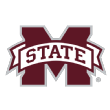
21. Mississippi State Bulldogs
Best case: The talent Sam Purcell has put together from the transfer portal and his returners meshes well together and Mississippi State goes unbeaten against a weaker nonconference schedule. But the world sees the Bulldogs are for real when they upset South Carolina in Columbia in the second game of the SEC season. That propels them to a third-place finish. Lauren Park-Lane is the top newcomer in the SEC and Jessika Carter ends her career on some All-American teams.
Worst case: Mississippi State has its moments, but the SEC is just too deep. Unable to truly compete with the best teams in the league, the Bulldogs finish in the middle of the pack. The physicality of the SEC is more than the 5-3 Park-Lane is accustomed to and she struggles, along with DePaul transfer Darrione Rogers.

22. Colorado Buffaloes
Best case: Maddie Nolan turns out to be one of the best transfer fits in the country. Her added outside shooting is just what the Buffs needed next to all the experience of Quay Miller, Jaylyn Sherrod and Frida Forman. The Buffs take the next step, and their game at UCLA on Feb. 26 is essentially for the Pac-12 crown. Colorado comes up short there, but goes on to win the conference tournament, earns the right to host NCAA tournament games in Boulder and gets to the Elite Eight for just the fourth time in school history.
Worst case: Unable to build on the momentum of last season, Colorado struggles with consistency most of the year. Just when it seems like the Buffs have gotten their footing, a late-season trip to Los Angeles results in two losses to USC and UCLA, knocking the Buffaloes out of the Pac-12 race. They finish fifth and go quietly in both the Pac-12 and NCAA tournaments.
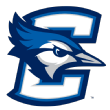
23. Creighton Bluejays
Best case: With four senior starters knowing exactly how to run coach Jim Flanery's 3-point-shot-heavy offense, the Bluejays thrive early in the season. It leads to a great run in the Big East, where only UConn proves too much. Emma Ronsiek, Morgan Maly, Lauren Jensen and Molly Mogensen all average in double figures, and Creighton reaches the Sweet 16.
Worst case: With no player on the roster taller than 6-1, the Bluejays' lack of size holds them back, even though they are good shooters. Creighton doesn't threaten UConn at all. In fact, Marquette overtakes the BlueJays for second place in the Big East. Creighton barely secures an NCAA tournament berth and exits quietly in the First Four.

24. Kansas State Wildcats
Best case: The pairing of Ayoka Lee and Gabby Gregory gives the Wildcats something no one else in the Big 12 has -- a true post and perimeter player each capable of scoring 20 points in any game. They ride that offensive talent to a third-place finish in the conference just behind Baylor and Texas and win an NCAA tournament game for the second time in three years.
Worst case: The knee injury that kept Lee out the entirety of last season lingers, limiting her mobility. Gregory, along with Serena Sundell, Jaelyn Glenn and Brylee Glenn, is still good, but her shooting percentage, which has never been above 41.5%, suffers without a more impactful Lee to open more space. The Wildcats can't quite get into the top half of the Big 12 and miss the NCAA tournament for the second consecutive year.

25. Washington State Cougars
Best case: Topping last season would be another program milestone for the Cougars. Led by Charlisse Leger-Walker, who wins Pac-12 Player of the Year, Washington State finishes in the top four in the conference and not only wins the first NCAA tournament game in program history, but advances to the Sweet 16.
Worst case: The Pac-12 proves to be too deep for the Cougars to improve. They finish the conference season at .500 once again, but this time don't pull off the Pac-12 tournament championship run. They arrive at the NCAA tournament with a lower seed than last year's No. 5 and once again are bounced in the first round.

